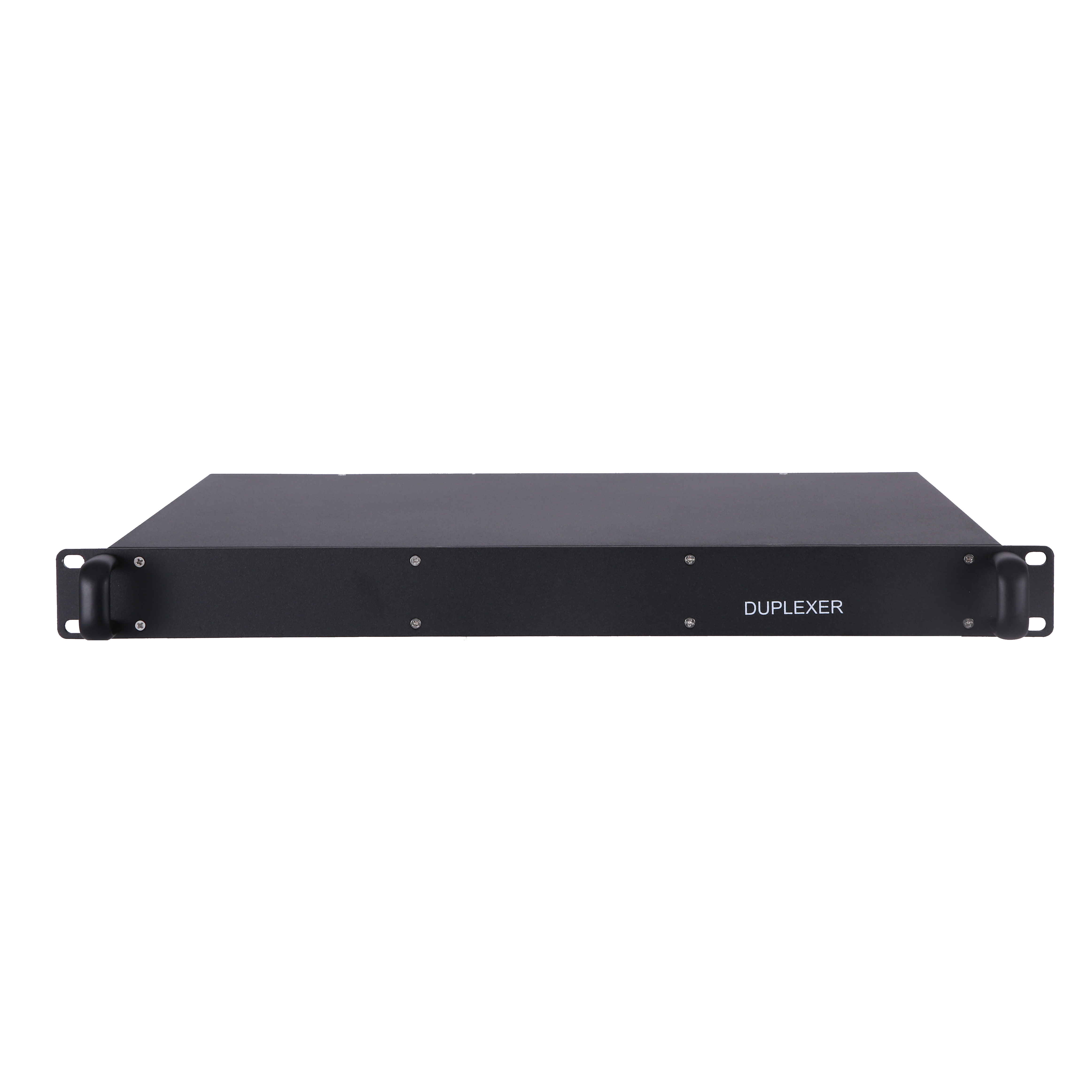
Focusing on the digitalization of the communication industry for 22 years
Just to provide better services for customers




Band Rejection Duplexer Overview
A band rejection duplexer is an essential component in interfrequency duplex radio stations and repeaters. Its primary function is to isolate the transmitted and received signals, ensuring that both transmission and reception can occur simultaneously without interference.
This type of duplexer consists of two sets of resonant cavities, each tuned to a specific frequency band. These cavities effectively suppress the transmitter’s signal from leaking into the receiver path, thereby protecting the receiver's sensitivity and ensuring optimal performance.
In the walkie-talkie industry, the duplexer is commonly referred to as an antenna sharing device. It is responsible for coupling weak incoming signals to the receiver, while simultaneously routing high-power transmitted signals to the antenna via the feeder. The duplexer must ensure that both signal paths operate independently and do not interfere with one another.
Characteristics
Low-Loss Cavity Design: Utilizes precision-engineered low-loss cavities to enhance isolation between transmit and receive paths.
Compact Form Factor: Features a space-saving design that is smaller and more lightweight compared to traditional cavity duplexers.
High Stability: Incorporates a copper spiral cavity with temperature compensation to ensure consistent performance across varying environmental conditions.
| Description | Technical parameters |
| Frequency range | 136-174MHz / 330-400MHz / 400-430MHz / 440-470MHz (Optional other frequencies) |
| Work bandwidth | VHF:±0.5MHz UHF:±1MHz |
| Duplex spacing | VHF: 5.7MHz UHF: 10MHz |
| Maximum Power | 50W |
| Insertion loss | ≤1.0dB |
| Wave in the band | ≤0.5dB |
| insulation RX-TX band | ≥80dB |
| Standing-wave ratio | ≤1.25 |
| Humidity | 5% to 95% RH |
| working temperature | -30℃ to ﹢60℃ |
| Storage temperature | -40℃ to +85℃ |
| Impedance | 50Ω |
| Connector | N-K connector( female) |
| Size | 1U/2U |
Name:Changbo (Shanghai) Communication Technology Co., Ltd
Phone:+86-21-55090630/31/32
Email:cb@changbo.com.cn
Address:4th Floor, Building 2, Dehui Technology Park, No. 358 Liuyuan Road, Baoshan District, Shanghai
Global Unified Hotline
021-55090630/31/32
Scan
Follow WeChat official account


